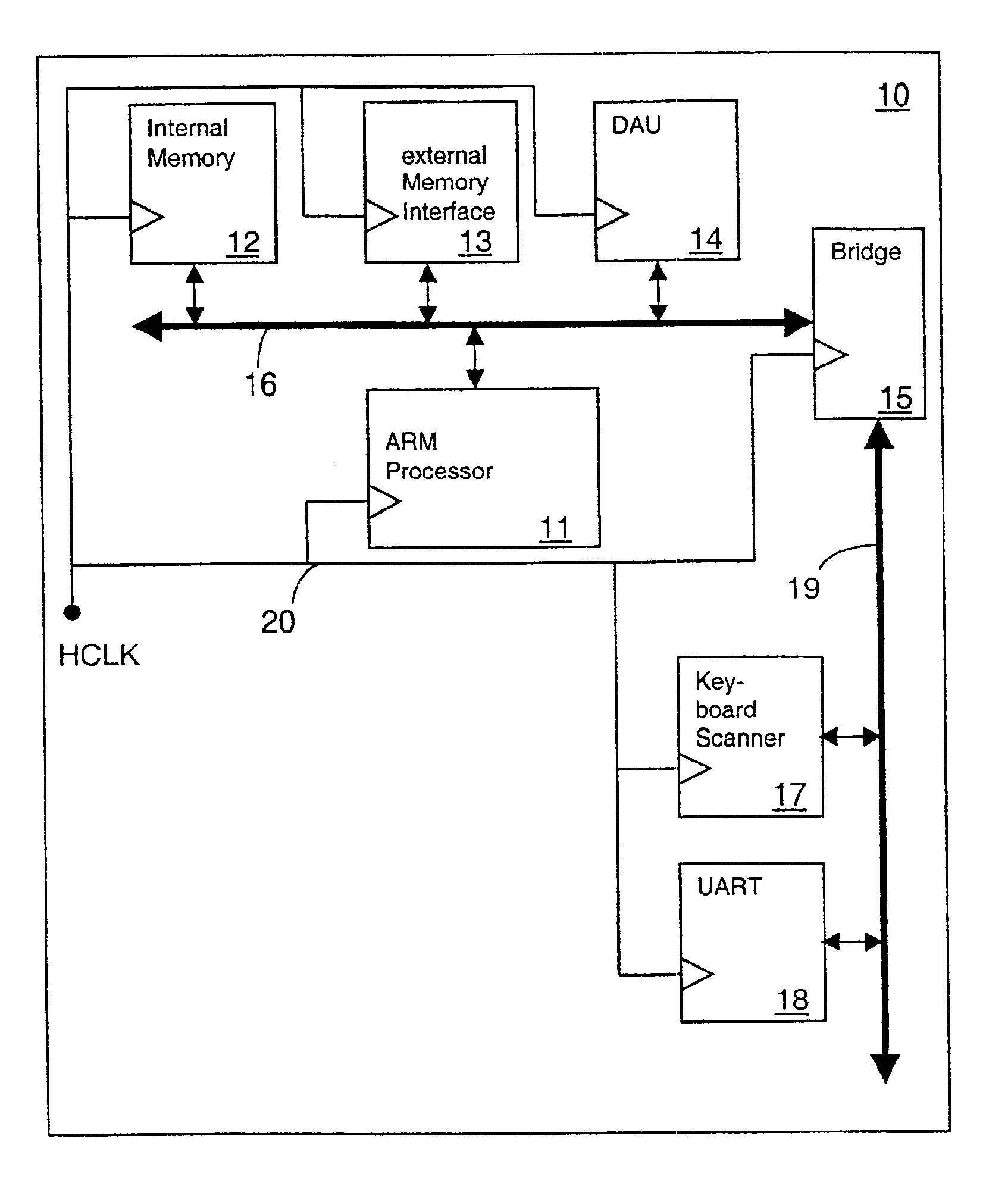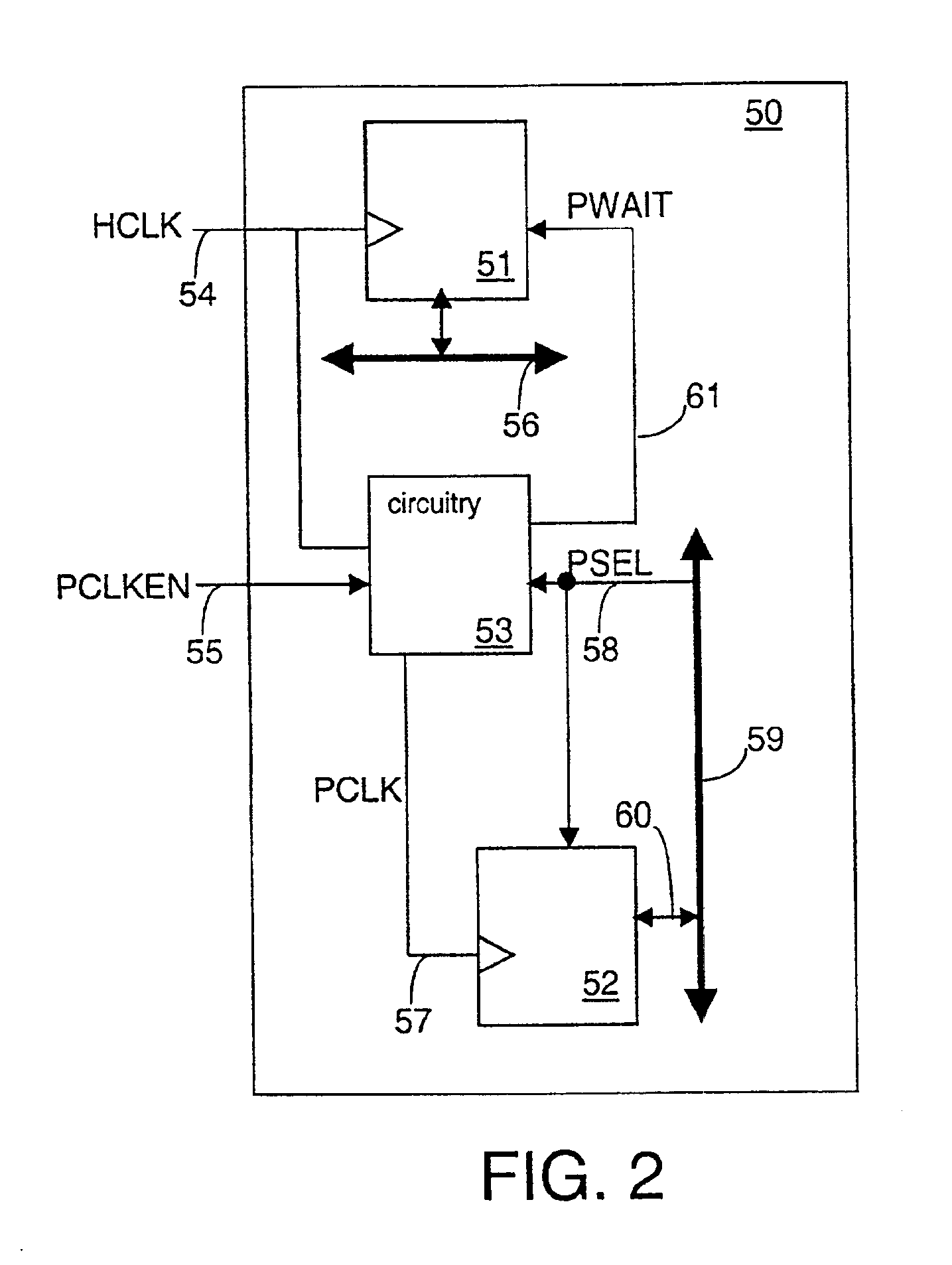Extension for the advanced microcontroller bus architecture (AMBA)
a technology of advanced microcontrollers and bus architectures, applied in the direction of instruments, liquid/fluent solid measurement, generating/distributing signals, etc., can solve the problems of inability to interchange peripherals, congestion is likely to occur, and there is no standardised solution to this problem, so as to improve amba, reduce power consumption of apb functional blocks, and improve the effect of amba
- Summary
- Abstract
- Description
- Claims
- Application Information
AI Technical Summary
Benefits of technology
Problems solved by technology
Method used
Image
Examples
first embodiment
A first embodiment is described in connection with FIG. 2. A SoC 50 is illustrated in this Figure. It comprises a high-speed functional block 51 and a system bus 56 (high-speed bus). The high-speed functional block 51 receives a high-speed clock (HCLK) via a high-speed clock line 54.
In addition to the system bus 56, the system 50 also comprises a peripheral bus 59 (low-speed bus). In the present embodiment, a low-speed functional block 52 is connected to the bus 59, as indicated by the arrow 60. The functional block 52 can send information (e.g., data) to the peripheral bus 59 and it can receive information from the peripheral bus 59. According to the present invention, a circuitry 53 is provided. This circuitry 53 and the functional block 52 receive a select signal (PSEL) via the peripheral bus 59 and select line 58. This select signal (PSEL) is issued by a central address decoder (not shown in FIG. 2), for example. In the present example, the PSEL is assumed to be issued in order ...
PUM
 Login to View More
Login to View More Abstract
Description
Claims
Application Information
 Login to View More
Login to View More - R&D
- Intellectual Property
- Life Sciences
- Materials
- Tech Scout
- Unparalleled Data Quality
- Higher Quality Content
- 60% Fewer Hallucinations
Browse by: Latest US Patents, China's latest patents, Technical Efficacy Thesaurus, Application Domain, Technology Topic, Popular Technical Reports.
© 2025 PatSnap. All rights reserved.Legal|Privacy policy|Modern Slavery Act Transparency Statement|Sitemap|About US| Contact US: help@patsnap.com



